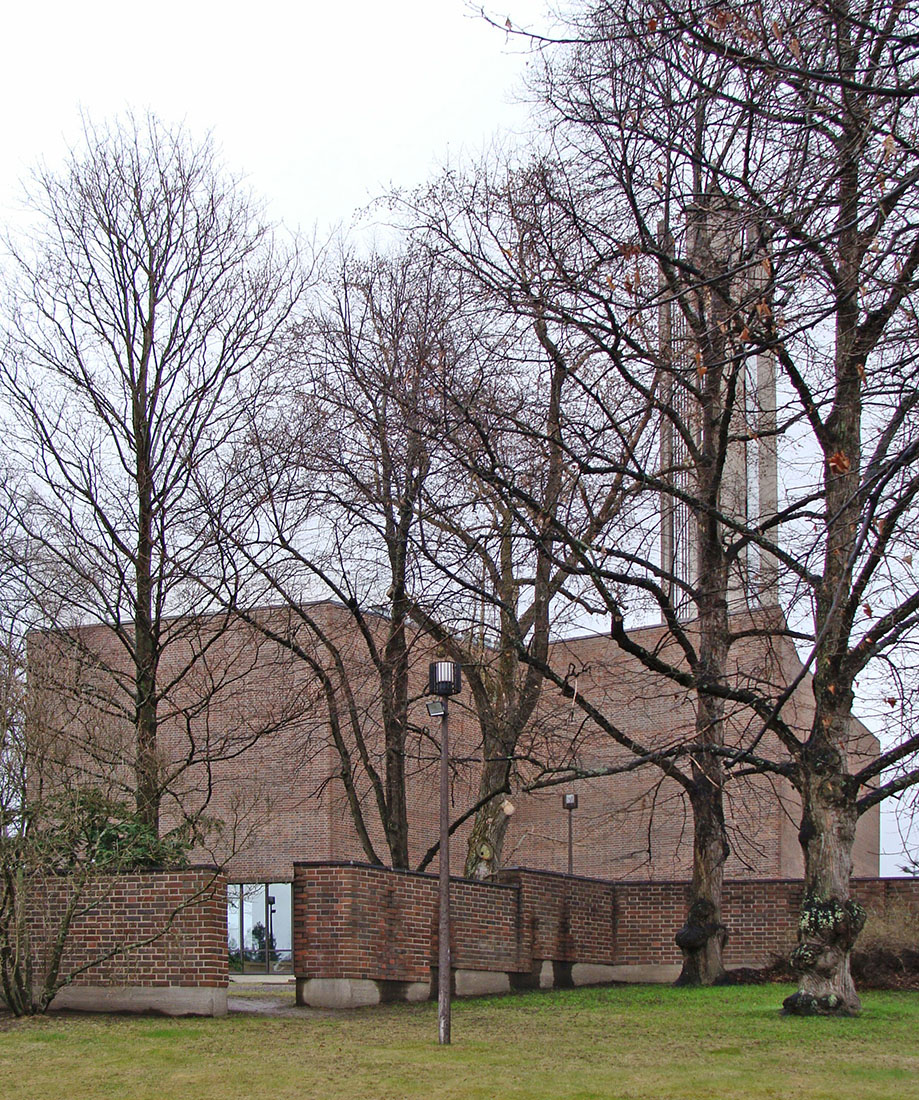 |
 |
 |
 |


Lahti Church (Ristinkirkko)
Kirkkokatu 4, Lahti
1969 - 1979
In 1950 Alvar Aalto won the competition for the Lahti church with his proposal, however construction of the building was postponed until a completely different building site was chosen. The designated site is on a hill, on which was located the city's late 19th century wooden church, designed by Jacob Ahrenberg. In 1969 Alvar Aalto was commissioned to design a new and larger church as a replacement for the older one. Alvar Aalto's key idea for this building is based on the context. Important for this design is the fact, that the city's central square is flanked on either side by a hill. The church is related to the City Hall designed by Eliel Saarinen. One of the main streets leads straight up to this building, whereas the opposite road axis connects to the top of the hill on which is now located Alvar Aalto's new church. These two constructions are interpreted as architectural landmarks. To the east of the church is located the graveyard, containing a large soldier's tomb. On the west side Alvar Aalto intended to have an open-air church with tiers of benches located in the tree-grown park.
On the exterior the so-called Ristinkirkko appears as a massive building made of dark red brick, with exception of the massive bell tower, realized in raw concrete. The concrete campanile is integrated into the northwest corner of the church. The ground plan of the church is layed out as an equilateral triangle with two severed angles. The building is placed slightly off the street axis. A wedge-shaped vestibule is added to the structure, so that the windows of the entrance hall, shaped like a monumental cross, are at right angles with the street perspective. Even if the building is basically symmetrical, the interior makes an irregular impression, since the walls and windows are designed asymmetrical. To the left of the altar is located the pulpit, which is partly embedded into the wall, resulting in a niche which is visible in the fašade. On the other side of the altar is to be found the choir and the organ. For the interior was requested a certain flexibility in order to have enough space for choir and orchestra in case of a concert. The building is covered by a monopitch roof which leans towards the chancel. The ceiling of the nave is formed like a vault consisting of a ray pattern. According to the 1969 planning the church should have a capacity for 1175 people at floor level and a further 225 people on the balcony. But in early 1975 the plans were updated again, reducing the seating capacity to 820 on ground floor and 280 on the balcony. These revised plans also included separate balconies for choir and organ. The official drawings of the church were the last ones to be signed by Alvar Aalto himself, but he did not live long enough to see the Lahrti church completed, since it was consecrated only in 1979.